Cabo Amarillo – Isolated Spore Syringe
Original price was: $20.00.$10.00Current price is: $10.00.Strain origin: Cabo Amarillo -Found in the country side of Puerto Rico near Cabo Rojo and is a beautiful yellow variation.
The Spore Co-Op offers a carefully selected range of wood-loving Psilocybe spore prints. These prints come from wild and landrace genetics, collected through field experts and trusted mycologists. Each one is chosen for its purity, origin, and rarity.
Wood-loving species grow in natural, woody environments. They include legendary mushrooms like Psilocybe azurescens, Psilocybe cyanescens, Psilocybe ovoideocystidiata, and Psilocybe allenii. These mushrooms are known for their rich traits, powerful properties, and unique spore structures.
We also carry Exotic Spores from species beyond the cubensis world. These include Panaeolus cyanescens, Panaeolus cambodginiensis, and other rare tropical fungi. They are perfect for those looking to expand their microscopy studies.
Whether you study forest-dwelling Psilocybes or rare tropical strains, our spore prints give you access to some of the most fascinating fungi on Earth.
Showing 1–16 of 23 results

Strain origin: Cabo Amarillo -Found in the country side of Puerto Rico near Cabo Rojo and is a beautiful yellow variation.
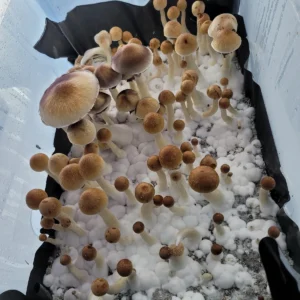
Cabo Rojo – Isolated Syringe hailing from Puerto Rico. Found in the country side of Cabo Rojo. This cube has beautiful fruits and all that original genetic make up from nature. Born only to the fields and its natural environment, these will surely be a microscopy project.

This Wild Land race hailing from Puerto Rico. Found in the countryside of Cabo Rojo.
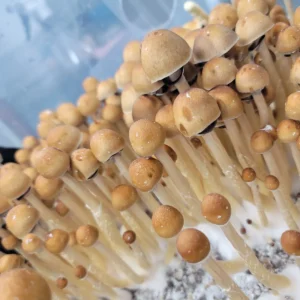
The Goldilocks (Wild) Spore Print comes from a wild landrace Psilocybe Cubensis discovered in Arkansas’ River Valley by Psilovibe. This naturally occurring strain has been carefully documented and preserved for microscopy and taxonomic research.
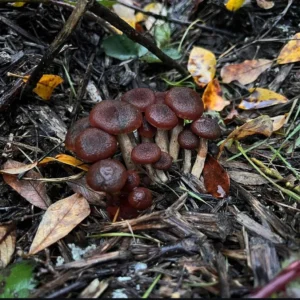
Gymnopilus aeruginosus is a species of mushroom belonging to the family Hymenogastraceae. It is known for its distinctive blue-green (aeruginous) coloration, which gives it its name.

Honduras Spore Print; Originating from northern Honduras. A community Mycologist on a trip in 2008 was able to get a few wild prints on his journey. This was founded on the northern coastal regions of Honduras. This is a entirely new genetic line from Honduras never seen before 2008.
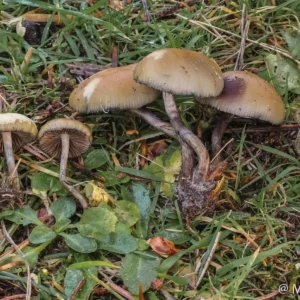
Named in honor of mycologist John W. Allen, Psilocybe allenii is a captivating wood-loving species native to the Pacific Northwest. Recognized for its chestnut-brown cap and unique umbo, this resilient mushroom thrives in mulched landscapes and decomposing wood. Our ethically sourced wild spore prints ensure high-quality specimens for research and collection
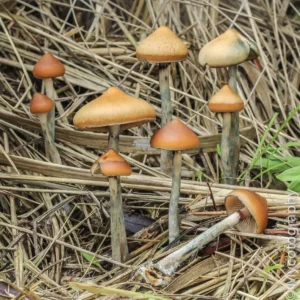
Naturally occurring along a narrow expanse of the West Coast, P. azurescens graces the landscapes of Oregon and California. This enigmatic mushroom has been spotted as far south as Depoe Bay, Oregon, and as far north as Grays Harbor County, Washington. Its heartland is nestled around the Columbia River Delta, with initial sightings in Hammond, Oregon, near Astoria. Venturing north, it thrives along the Columbia River in Washington, from Long Beach to Westport, and has even been reported in Stuttgart, Germany.

Panaeolus cinctulus is a species of mushroom in the family Bolbitiaceae. It is commonly known as the banded mottlegill or weed panaeolus.
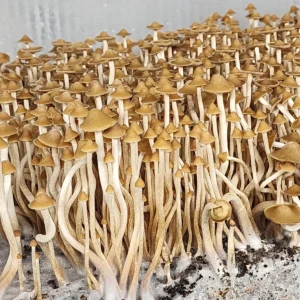
Psilocybe Subtropicalis is a subtropical mushroom species in the Hymenogastraceae family. Native to warm, humid regions, this species thrives in challenging conditions and is valued for its distinctive morphology and resilience. Ps. Subtropicalis was officially described by renowned mycologist Gastón Guzmán in 1995.
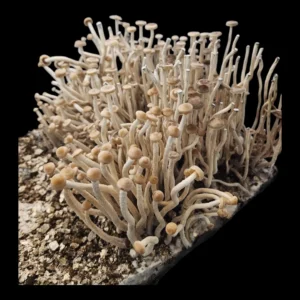
Psilocybe zapotecorum is a rare psychoactive mushroom species native to Mexico and parts of Central America. It thrives in humid, mossy environments, often near decaying wood in subtropical forests. This species carries deep cultural significance among the indigenous Zapotec people of Oaxaca, for whom it has been an important part of traditional practices.
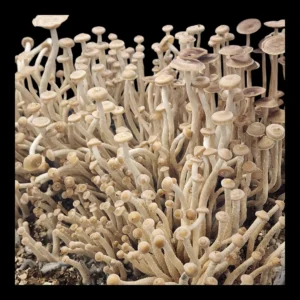
Psilocybe zapotecorum is a rare psychoactive mushroom species native to Mexico and parts of Central America. It thrives in humid, mossy environments, typically near decaying wood in subtropical forests. This species carries deep cultural significance, particularly among the indigenous Zapotec people of Oaxaca—its namesake—highlighting its importance in traditional ethnomycology.
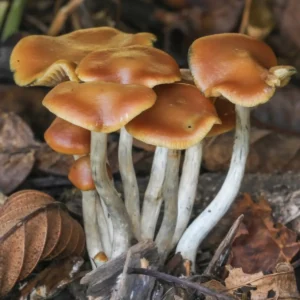
Psilocybe cyanescens, commonly known as the Wavy Cap, is a captivating mushroom species celebrated for its distinctive wavy-edged cap and potent properties. This species thrives in temperate regions, particularly in the Pacific Northwest of the United States, and is typically found during the autumn months.
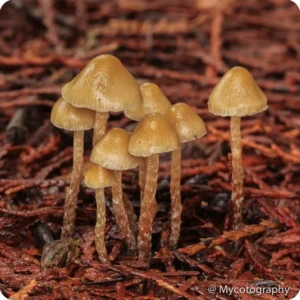
Psilocybe Pelliculosa Wild Spore Print is a rare wood-loving species native to the Pacific Northwest. Primarily found in Washington, Oregon, and British Columbia. This species thrives in coniferous forests, particularly in areas with disturbed soil, such as paths and roadsides.
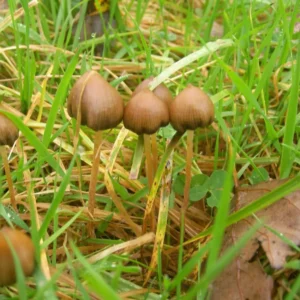
Psilocybe semilanceata, commonly known as the Liberty Cap, is a renowned psilocybin-containing mushroom celebrated for its distinctive appearance and widespread presence in temperate regions. This species is notable for its potency and unique morphology, making it a subject of interest for mycological research and microscopy studies.

Psilocybe stuntzii, affectionately known as Stuntz’s Blue Legs or Blue Ringers, is a psilocybin-containing mushroomnamed in honor of mycologist Daniel Stuntz from the University of Washington. First identified on the university’s campus, this species is a member of the Hymenogastraceae family and is notable for its distinctive blue-staining characteristics upon handling or with age.